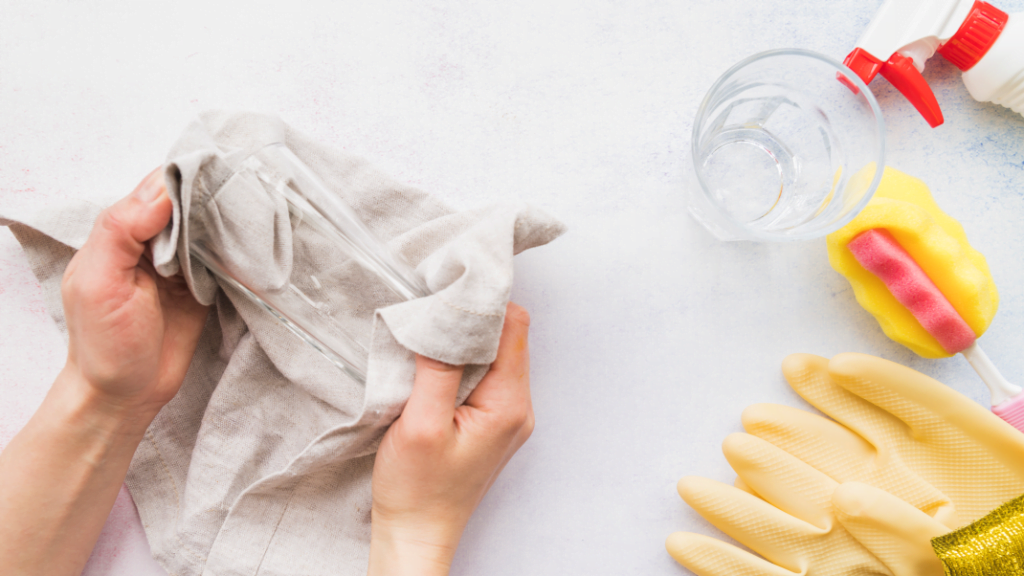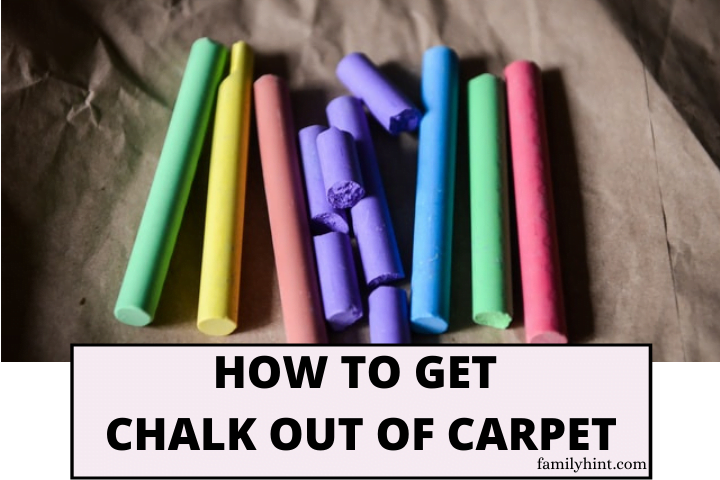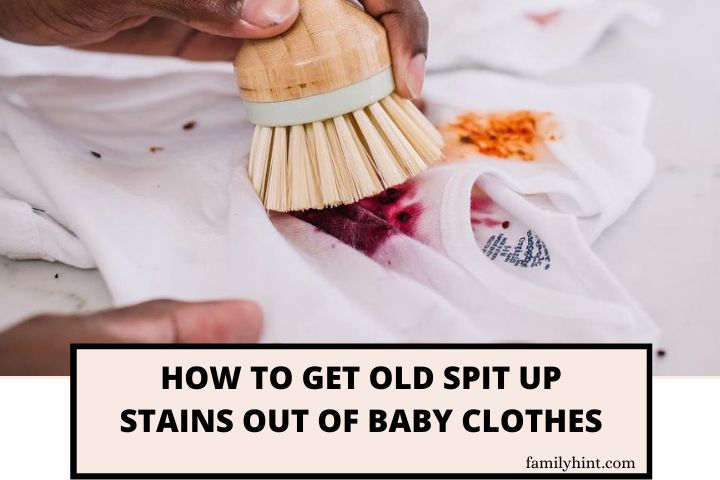
Within the realm of intimacy, water-based lube has gained widespread popularity due to its versatility and ease of use. Water-based lube is a popular and versatile lubricant used by many couples seeking enhanced pleasure and comfort during intimate moments. However, amidst the benefits is the potential for unsightly stains on bedding that can be a source of worry for many users. Maintaining cleanliness in intimate spaces is essential; thus, addressing this issue is of utmost importance.
Water-based lube stains can be challenging to get rid of, especially if they have been left untreated for a while. However, with proper techniques and products, you can quickly eliminate these stains.
The key is pretreating the affected area as soon as possible to prevent the stain from setting in. You can use various methods to remove lube stains from your sheets, including household ingredients like vinegar, baking soda, and hydrogen peroxide. Commercial stain removers and laundry detergents can also help eliminate those stubborn stains.
In this article, we will delve into the properties of water-based lube, the implications of potential stains on sheets, and, most importantly, present practical solutions for efficiently removing these blemishes.
Understanding Water-Based Lube And Its Potential To Stain Sheets
As a lubricant commonly used during intimate activities, Water-Based Lube primarily comprises water-soluble ingredients, such as glycerin and propylene glycol. Its formulation allows for smooth application and easy clean-up, contributing to its popularity among individuals and couples seeking heightened pleasure and comfort during intimate moments.
Generally, water-based lubes are less likely to stain sheets than silicone-based lubes. Certain factors like the fabric type, quality of the lube, and the length of time the lube remains on the fabric can impact whether or not a stain is left behind. It’s important to note that even if a water-based lube doesn’t create an immediately visible stain, it may still leave a residue that could become more apparent after washing or over time.
Does Water-Based Lube Stain Sheets?
Water-based lubes typically have a thinner consistency than silicone-based lubes and are generally considered less likely to stain sheets. However, certain factors can contribute to the likelihood of stains occurring.
Water-based lubes can contain ingredients that may leave behind residue on fabric, which can result in stains. These ingredients can include oils, glycerin, or other substances that are not easily washed out. As the lube permeates the fabric, it can leave behind residue that, upon drying, may manifest as unsightly marks or discoloration on the sheets.
Additionally, some water-based lubes may contain additives like dyes or fragrances, which could contribute to staining, especially if the sheets are of lighter color or sensitive to such components. Understanding the factors that make water-based lube susceptible to causing stains on bedding sheets is crucial in adopting appropriate measures to address this concern and maintain a pristine and pleasurable intimate environment.
How To Remove Water-Based Lube Stains

1. Gentle Pretreatment for Fresh Stains
If you notice a fresh water-based lube stain on your sheets, acting quickly is essential. Start by pretreating the stain with a mild detergent. Mix a small detergent with warm water and apply it directly to the stain. Gently rub the fabric together, focusing on the stained area. Allow the detergent to penetrate the fabric for a few minutes before proceeding to the next step.
2. Using Dish Soap for More Stubborn Stains
If the stain persists, it’s time to step up your stain-removal game. Dish soap can be an effective tool for tackling more stubborn water-based lube stains. Apply a small amount of dish soap to the stained area and gently rub it with your fingers or a soft brush. Allow the dish soap to sit on the fabric for a few minutes, then rinse it with cool water. Repeat this process until the stain starts to fade.
3. Applying a Stain Remover for Set-in Stains
A stain remover can be your best bet for set-in water-based lube stains that have been left untreated for extended periods. Look for a stain remover specifically formulated for the fabric you are dealing with. Follow the instructions on the product carefully and apply the stain remover directly to the stain. Gently rub the fabric together to work the stain remover into the fabric fibers. Allow the stain remover to sit for the recommended time before laundering the sheets as usual.
Removing Water-Based Lube Stains From Different Fabrics
Removing Lube Stains From Cotton Sheets
Cotton sheets are generally easier to clean compared to more delicate fabrics. To remove water-based lube stains from cotton sheets, start by pretreating the stain with a mixture of warm water and detergent, as mentioned earlier. For more stubborn stains, add a small amount of white vinegar to the mixture before pretreating. After removing the stain, launder the sheets according to the manufacturer’s instructions.
Getting Rid of Lube Stains on Satin Sheets
Satin sheets require extra care when it comes to stain removal. To remove water-based lube stains from satin sheets, pretreat the stain with a gentle detergent diluted with warm water. Use a soft brush or cloth to work the detergent into the stained area carefully. Rinse off the detergent with cool water. If the stain persists, apply a specialized stain remover designed explicitly for satin fabrics. Follow the instructions on the product and launder the sheets accordingly.
Removing Lube Stains From Microfiber Sheets
Microfiber sheets are known for their stain-resistant properties. To remove water-based lube stains from microfiber sheets, pretreat the stain with warm water and mild detergent. Gently rub the fabric together to work the detergent into the stain. Rinse off the detergent with cool water and repeat the process if necessary. After removing the stain, launder the sheets as usual.
Preventing Lube Stains on Sheets

Using a Condom To Minimize Potential Stains
As mentioned earlier, using a condom can help reduce the chances of lube stains on your sheets. By using a condom, you create a barrier between the lube and the fabric, minimizing the risk of staining. This is especially helpful when using silicone-based lubricants, as they are more prone to leaving stains.
Checking Compatibility With Your Sheets
Before using any lubricant, ensuring it is compatible with your sheets is important. Some fabrics, such as delicate or satin sheets, may be more susceptible to staining. Reading the instructions and guidelines provided by the lubricant manufacturer can help you determine whether it is safe to use on your sheets.
Choosing a Suitable Lube for Your Needs
Choosing the right lube is crucial in preventing stains on your sheets. Consider opting for a high-quality water-based lube specifically formulated to be easily removed from fabrics. Pay attention to product labels and choose lubes labeled as stain-free or leaving minimal residue. Consulting with experts or seeking recommendations from other individuals and couples can also help you find a lube less likely to cause stains.
Can Laundry Detergent Effectively Remove Lube Stains From Sheets?
Laundry detergent can be effective in removing lube stains from sheets. You can pretreat the stain by applying a small amount of laundry detergent directly to the affected area and gently scrubbing it with a soft brush or your fingers. After pretreating, wash the sheets in the washing machine using the recommended amount of detergent and the appropriate water temperature for the fabric.
Additionally, pretreating the stain with laundry detergent before washing can significantly enhance the chances of removing water-based lube stains. This process helps break down the oils and other substances present in the lube, making it easier to wash away during the laundering process.
While no specific detergent or stain remover is universally guaranteed to remove silicone lube stains, using a stain remover for oil-based stains or a detergent with strong stain-fighting qualities can increase the chances of successful removal. Always follow the instructions provided by the product manufacturer.
Can Dish Soap Be Used as an Alternative to Laundry Detergent in Removing Lube Stains?
Yes, dish soap can be used as an alternative to laundry detergent in removing lube stains. Its grease-fighting properties can help break down the lube and facilitate its removal from the fabric. However, rinse the sheets thoroughly after using dish soap and wash them as usual.
By following these guidelines and promptly treating lube stains on your sheets, you can minimize the chances of them becoming stubborn and challenging to remove. Always check the care instructions provided by the sheet manufacturer and test any cleaning products in an inconspicuous area before applying them to the entire stained area.
Dealing With Silicone Lube Stains on Sheets
Silicone-based lubricants can be more challenging to remove from sheets compared to water-based lubes. This is because silicone lube is not water-soluble and tends to adhere more firmly to fabrics. As a result, silicone stains may require different treatment methods.
To remove silicone-based lube stains from sheets, remove any excess lube using a clean cloth or paper towel. Next, pretreat the stain by applying a small amount of dish soap directly to the affected area and gently rubbing it in. Let the dish soap sit on the stain for a few minutes, and then rinse it off with warm water. Finally, wash the sheets as usual with laundry detergent.
How to Remove Water-Based Lubricant Stains
If you’re a fan of water-based lubricants, you probably know they’re not just for use in the bedroom. They also make great massage oils and personal lubricants. However, removing it can be difficult if it spills on your sheets or clothing.
Scrape as much as possible: If you have access to a razor blade or other sharp object, scrape off as much of the excess lube from the surface of your fabric. This will help prevent smearing and allow you to treat the stain more easily later.
Apply vinegar to the stain: Vinegar is a great all-purpose cleaner that works well on many stains. Pour some vinegar directly onto your fabric and scrub with a toothbrush or old toothbrush until most of the stain is gone. Then wash as usual with warm water and detergent.
Does KY Jelly Stain Sheets?
Yes, KY Jelly stain sheets. The ingredients in KY Jelly are water, glycerine, and propylene glycol. You should always wash your sheets after use to remove any residue from the lubricant. If you don’t wash them, the oil can become sticky and cause other problems with your bedding. It can even attract dust mites and other allergens that affect your health.
Frequently Asked Questions
Q: Can water-based lube stains be removed from latex sheets?
A: Water-based lube stains can be removed from latex sheets using the abovementioned method. However, check the care instructions for your latex sheets to ensure proper cleaning.
Q: Are there any other ways to clean lube stains from sheets?
A: Yes, there are a few alternative methods you can try. First, use a degreaser, such as dish soap or laundry pre-treatment, to help remove the lube stains. Then, mix a cleaning solution of hot water and detergent. Soak the stained area for a few hours before laundering. If the stained sheets are white, you can use hydrogen peroxide or bleach (if safe for the fabric) to remove the stains.
Q: Is washing the sheets immediately after getting lube stains necessary?
A: Washing the sheets immediately is unnecessary, but treating the stains as soon as possible is recommended for a higher chance of removal.
Q: What if the lube stain does not come out after washing?
A: If the lube stain does not come out after washing, try repeating the cleaning process or use a stain remover specifically formulated to remove fabric lubricant stains.
Q: Is air drying the fabric better than a dryer?
A: Air drying the fabric is a great option, especially for delicate or sensitive materials. However, if the care instructions allow, you can also dry the sheets in the dryer.
Q: Are there any specific products formulated to remove lube stains?
A: Yes, cleaning products are available in the market, specifically formulated to remove lube stains. These products can be effective in removing stains from sheets and clothing.
Conclusion
In conclusion, addressing the potential issue of water-based lube stains on sheets is essential for maintaining a clean and inviting, intimate space. By being aware of the staining nature of this lubricant, individuals, and couples can take proactive steps to ensure their bedding remains free from unsightly blemishes.
Removing these stains helps preserve the pristine condition of sheets and promotes a sense of comfort and hygiene, enhancing the overall intimate experience. Moreover, spotless bedding can foster a more relaxed and uninhibited atmosphere, allowing partners to immerse themselves in the pleasure without distractions fully.
To easily remove water-based lube stains, consider using appropriate stain-removal techniques and products, particularly those suited for the specific bedding material. Promptly attending to stains and employing gentle yet effective cleaning methods can help prevent the residue from setting and becoming more challenging to remove.
For more valuable content like this, join our community at the Family Hint today!




